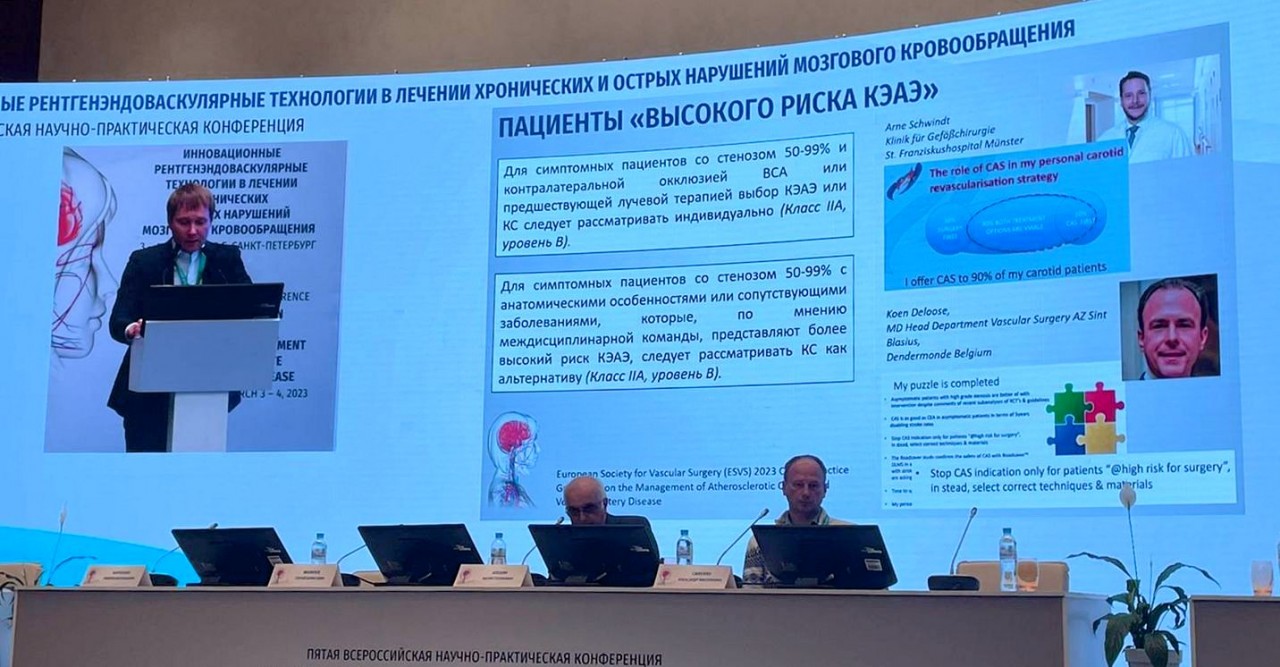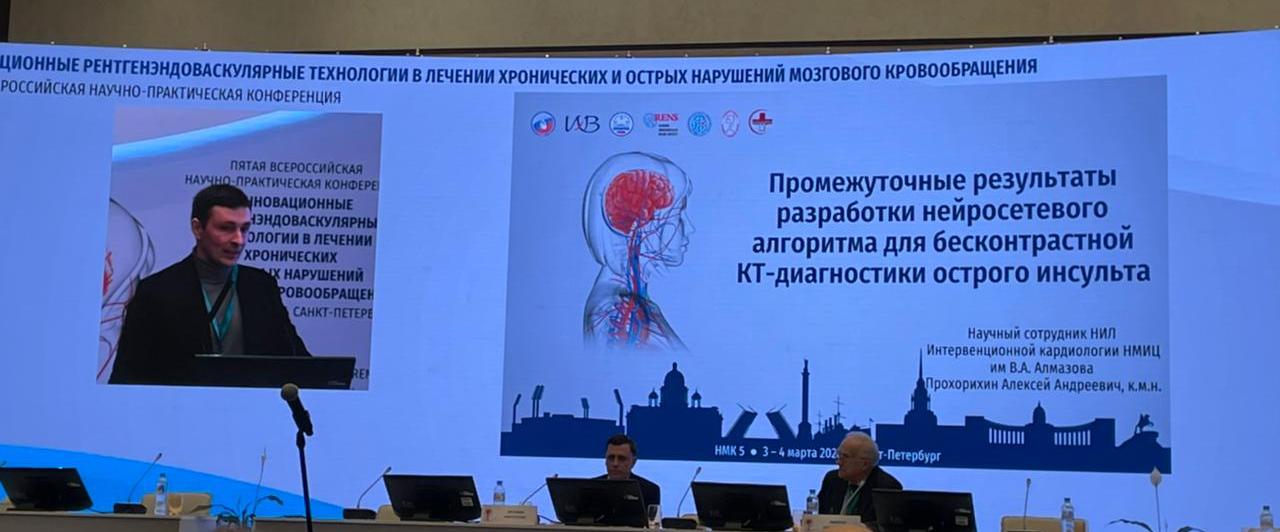Possibilities of modern endovascular and vascular surgery for the treatment and prevention of stroke

On March 3–4, the 5th All-Russian Research and Training Conference on Innovative X-Ray Endovascular Technologies for the Treatment of Chronic and Acute Cerebrovascular Disorders was held in Saint Petersburg. Today, this is one of the largest events in our country dedicated to the treatment and prevention of stroke. The main organizer is the Russian Scientific Society of Specialists in X-Ray Endovascular Diagnosis and Treatment chaired by Bagrat Alekyan, Academician of the Russian Academy of Sciences.
The two days’ program included 6 plenary sessions and brought together more than 500 specialists from 45 regions of Russia who discussed modern approaches to stroke treatment in Russia, the organization of a stroke network in the regions, endovascular methods for the treatment of acute and chronic cerebrovascular accidents, hemorrhagic stroke treatment, as well as the role of artificial intelligence and mathematical modeling in endovascular surgery.
Dr. Mikhail Chernyavsky, Chief of the Research Department for Vascular and Interventional Surgery, gave a presentation entitled “Elective and emergency carotid stenting” dedicated to the technical aspects of the procedure in the light of current guidelines for the treatment of patients with brachiocephalic arterial disease.
Almazov Centre annually performs about 350 procedures for carotid artery lesions, with a total of more than 1,500 procedures over 5 years. The WCRC for Personalized Medicine provides biobanking of material obtained during procedures on the carotid arteries, investigates molecular and genetic predictors of the early development and progression of atherosclerosis and develops a methodology for predicting the outcomes of surgical treatment in patients with peripheral atherosclerosis using artificial intelligence. Thanks to the accumulated experience, advanced endovascular technologies and state-of-the-art equipment of the Centre, these procedures are safely and effectively performed even in the most severe cases.

In his presentation entitled “Intermediate results of the development of a neural network algorithm for non-contrast CT in diagnosing acute stroke”, A. Prokhorikhin, Researcher at the Research Laboratory of Interventional Surgery, spoke about a system that allows diagnosing foci of acute ischemic stroke using AI technology, which in the future can help doctors improve the efficiency of early diagnosis of the disease.
The global prevalence of acute cerebrovascular accidents is estimated to be more than 100 million people annually, and in Russia stroke claims about 200 thousand lives a year. Therefore, it is vitally important that experts from various fields of medicine engage in a dialogue to explore multidisciplinary approaches to solving the most pressing issues of prevention and treatment of this serious disease.
